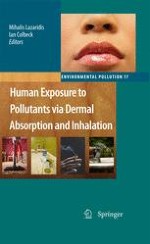2010 | OriginalPaper | Buchkapitel
3. Chemical Reactions Among Indoor Pollutants
verfasst von : Glenn Morrison
Erschienen in: Human Exposure to Pollutants via Dermal Absorption and Inhalation
Verlag: Springer Netherlands
Aktivieren Sie unsere intelligente Suche, um passende Fachinhalte oder Patente zu finden.
Wählen Sie Textabschnitte aus um mit Künstlicher Intelligenz passenden Patente zu finden. powered by
Markieren Sie Textabschnitte, um KI-gestützt weitere passende Inhalte zu finden. powered by
